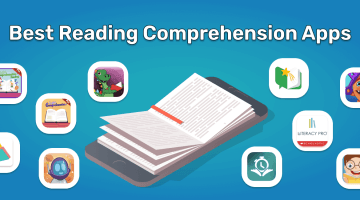Instructional Strategies for Math
Updated on January 8, 2024
Effective math instruction begins when teachers are passionate and develop high expectations for students. Using differentiated learning experiences and culturally relevant practices, teachers can meet each student’s learning needs. That is why tutors need instructional strategies for math to allow learners to enjoy and understand math easier.
What Are Instructional Strategies for Math?
Educators use instructional math strategies to help students become strategic and independent learners. On the one hand, teachers employ instructional math strategies in the studying process and they become learning strategies. On the other hand, learners may independently pick appropriate strategies to effectively solve math problems.
When teachers use instructional strategies for math, the following can happen:
- They motivate students to love math and help them focus their attention during lessons.
- Teachers can organize information so that students understand and remember it easily
- Teachers can monitor each student’s development and assess learning
To become successful and benefit from instructional strategies for math, learners require:
- Meaningful support from teachers that includes guided practice, modeling, and independent practice.
- Meaningful connections between teacher’s ideas and skills
- Encouragement by teachers to self-correct and self-monitor
- Tools to reflect and assess own learning
- A variety of learning materials and instructional approaches
- Opportunities to transfer math ideas and skills from one situation to another. Further, learners can also independently showcase what they know.
Teachers can use high-impact instructional math strategies across all grade levels to accommodate a wide range of students’ differences.
Math & Reading Camp
Join us to help your kid achieve
their full math and reading potential!
 Apply now
Apply now
5 Instructional Strategies for Math
Creating excitement for math can be an uphill task for every teacher. But there are some tools teachers and students can apply. Here are simple instructional strategies for math that may help make students interested in math:
1. Conceptual Understanding
Helping your students grasp the concept behind a math lesson is crucial, but it may not always be easy. Even top performing students in your class may rely on a particular pattern to solve a math problem. The best instructional strategies for kindergarten math include math manipulatives and visual aids. Teachers can use these tools to help students acquire conceptual understanding.
Math is never a two-dimensional subject. For instance, even the best drawing of a cone may not provide learners with the experience of holding a real cone. Therefore, it would be best to discover ways to let your classroom examine math from all sides.
Math manipulation doesn’t require using anything fancy. Teachers can take magnets, toys, molding clay, and basic wood blocks to prepare great hands-on lessons.
Math word problems are also helpful tools for demonstration. You can use hot wheels to teach your students about velocity and acceleration. Teachers can introduce a tape measure as an interactive way to teach about volume and area in math.
When teachers use helpful instructional tools to allow students conceptualize math concepts, kids have opportunities to bring math off the page into practical life.
The use of visual strategies in the classroom helps students apply an abstract concept to a physical scenario. Teachers can encourage students to use visual methods like drawings when solving math problems. When students see a problem in specific ways, brain neural networks are built, which positively influences retention and understanding of new concepts.
2. Cooperative Learning Strategies
When you encourage students in class to work together, everyone benefits. Advanced learners can lead others in the class, and in the process, continue to solidify their knowledge. Students who understand concepts better may have the right words to explain a topic to the rest of the students.
Teachers can use a cooperative learning strategy to allow students to view math problems from numerous angles. Thus, kids can be more flexible and think outside the box.
One of the examples of instructional strategies for kindergarten math is using a word problem and encouraging students to form small discussion groups and create problems to solve and present. Encourage each student to contribute and bring something to the group, thus explaining the importance of teamwork.
3. Significant and Frequent Homework
When it comes to homework, teachers must think of fun ways to help students remember concepts and solve problems in worksheets and textbooks. Therefore, develop more meaningful homework in your curriculum plans, for example, include games.
The examples of instructional strategies for math include the use of board games. Encourage parents and children to play quiz-style games together at home. Such activities improve critical thinking, basic math skills, and problem-solving abilities.
Sometimes, you should give homework that will not pressure parents. Therefore, you can assign game-based options such as the prodigy math game. Such games are available at Brighterly.com. Register at Brighterly to access a wide range of fun games, videos, and other helpful homework assignment materials.
Math & Reading Camp
Join us to help your kid achieve
their full math and reading potential!
 Apply now
Apply now
4. Verbalize Math Problems
Teachers always have little time to apply strategies for slow learners to understand math concepts. Therefore, teachers should often move faster to complete the syllabus and keep up with the expected standards. It would help if teachers could set aside some time to determine if students are struggling with some topics.
Teachers should encourage students to feel free and ask as many questions as they have when being stuck on some topics in class. Keep an open conversation to listen to your students’ questions.
The best way a teacher can learn about a classroom problem is to address typical troubles students have experienced in the past lessons. Teachers can revisit the one-time tricky study areas of the entire class or of most students in the classroom.
Make sure to let students understand that some topics are challenging, leaving the door open for asking numerous questions.
5. Explicit Instruction
When introducing a new concept or topic, you can’t just jump straight away into fun or problem-solving. You need to set a foundation for the upcoming activities by giving explicit instructions.
Teachers can begin by setting lessons of a given day on the classroom whiteboard, along with materials required to demonstrate the future activities. Ensure that you focus on new terms and concepts your students should prepare for the next class.
A tip: Remember not to stay on the instruction part for long. Immediately after introducing the topic, go straight to the fun strategy of the day’s lesson.
Conclusion
When using instructional strategies for math, teachers should encourage students at the end of each lesson to have reflection time individually or in groups. Reflection helps students measure personal growth and assess understanding of the subject. Students will also realize the value of working together as a team and respecting each other’s viewpoints.











